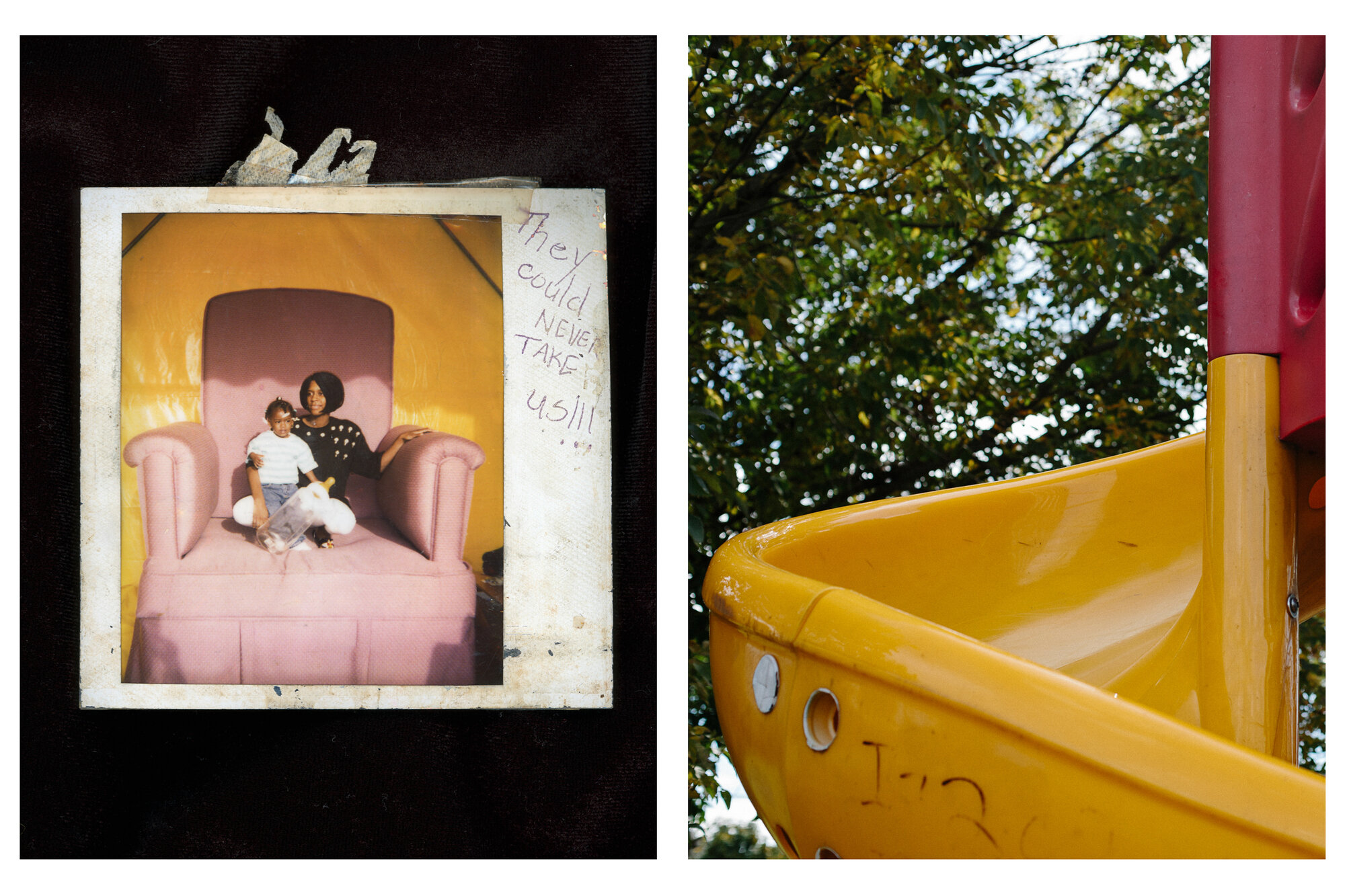“Oh, Mother of Mine,” a short documentary and photography project by Anna Rawls, explores the generational impact of incarcerating mothers.
Originally published in The Marshall Project on October 7th, 2021
When Mom Is In Prison — And When She Comes Home
“Oh, Mother of Mine,” a short documentary and photography project by Anna Rawls, explores the generational impact of incarcerating mothers.

Charnal Chaney takes a deep breath on her yoga mat as affirmations play from her phone speaker in Southeast Washington, D.C. Chaney, 31, begins most mornings this way, going to the gym and meditating before waking up her two eldest children for school.
This early morning routine, she says, is an everyday practice toward healing the trauma of her upbringing. Chaney’s first memory of her mother, Lashonia Thompson-El, is visiting her in prison. It would be 18 years before she connected with her outside its walls.
In a living room on the other side of Southeast Washington, 44-year-old G. King, a mother of four who was incarcerated for nine years, puts on mime makeup and gold satin gloves. She steps in front of a computer monitor filled with faces of women, and to the notes of “Worthy is the Lamb,” makes interpretive gestures, using movement to connect with herself and other women trying to rebuild their lives after prison.
These are scenes from “Oh, Mother of Mine,” a short documentary and photography project in which I followed Chaney and King — the daughter of an incarcerated woman and an incarcerated mom, respectively — over six months, exploring the impact of prison separation on families. In the film, Chaney asks what it means to be a mother. For her, the answer is ensuring that maternal wisdom is passed down through generations, while for King, it is tied to her own self-empowerment after returning home, so she can be more present for the children she was separated from.
The number of women in prison has grown over 700% from 1980 to 2019 according to The Sentencing Project. Over half of all women in U.S. prisons in 2016 were mothers, impacting the family structure and child development of families like Chaney and King’s.
Chaney was 3 years old when her mother was incarcerated. Her grandmother would take her to visit her mother in the D.C. Jail. Though she only faintly recalls details of this early time, the feelings she worked to suppress as a little girl are vivid: disappointment, heartache and confusion. Her voice cracks as she unravels her memories, noting how her grandmother discouraged her from showing these emotions to her mother during visits.
“One day she was like, ‘Every time you cry like that, or you act like that, it makes your mom sad, she already gotta be in and be away from you. So you can’t act like that. It isn’t making it better.’ And I don’t remember crying ever since then,” Chaney recalls.
The District of Columbia has no state-based prison system of its own, meaning residents convicted of felonies are sent to federal prisons. Chaney’s mom was transferred to a federal prison 300 miles away in Danbury, Connecticut, which she remembers taking seven hours to reach. In 2004, The Sentencing Project reported that 84% of parents in federal correctional facilities were housed more than 100 miles from their place of residence at arrest, making visits difficult and expensive.
Chaney’s visits became less frequent after her mom’s transfer, but from the ages of 9 to 13, Chaney says her father cut off communication with her mother.
At the height of this, Chaney remembers her mom making attempts to communicate. She tried calling Chaney’s school to talk with her, at times sending women she was locked up with who had reentered society to go try taking Chaney’s picture there.
When Chaney was 13, a judge granted her mother access to see her. It was then that Chaney learned what she was incarcerated for: double murder. One night in 1993, her mother fatally shot two women after an altercation in front of a dental office.
Though communication resumed, it would not repair the hurt Chaney experienced in her pre-teen years. Chaney attended 11 different schools, moving around between family members.
“I feel like over the years, anytime something happened, it was just like, ‘If my mother was here, this wouldn’t be happening.’ Or, ‘I can’t wait til my mother come home, and I would have somebody that genuinely love and care for me.’”
At 16, Chaney got pregnant with her first child, Amijah.
“I think I just wanted somebody to love me unconditionally,” Chaney said. “So yeah. I was like, I’m going to keep my daughter.”
She went on to have four more children: Aaliyah, twins Blake and Bryce, and Malakai.
Chaney says her pain didn’t resurface until her mom was released from prison in December 2011, when she was 21. The initial excitement of reconnecting wore off when Chaney realized she and her mom wouldn’t automatically become best friends, as she had envisioned.
“One day I was just going through something and I called her, and she didn’t answer the phone. And I texted her and I was just like, ‘All these years, you made it seem like you was writing them letters like you’re going to be this certain type of mother, but you’re not even showing up at all,’” Chaney said of the first few years of her mom’s release.
Chaney’s suppressed emotions from childhood led to a domino effect when her mother couldn’t be fully there for her. “It was hard for me to want to be a mother and show up for my own children, because she wasn’t being a mother and showing up for me.”
G. King, the mother of four, felt pulled in different directions upon her release from Maryland Correctional Institution for Women in 2017 after serving nine years for forging checks. While King managed to land a job as a government contractor thanks to the diligent preparation she did for her reentry, she wasn’t prepared for how hard the transition would be on her mental health and personal relationships.
“Everybody had a responsibility for me without allowing me to get myself together,” King said.
King’s incarceration had upended her family in 2009. Her two daughters were raised separately — one by her mom and one by their father — and had gradually decreased communication with her as they got older.
“I missed Woo’s graduation. She was my baby, so that bothered me. I missed the birth of all of my grandchildren, all seven of them. I missed my son getting married. My grandmother who raised me passed, so I missed my mother’s mother passing,” King said. “I just missed so much, so much, so much.”
In time, King realized she couldn’t show up for others until she first showed up for herself, a lesson that informed the book she wrote in prison, “Get Yourself Together First.”
And so, as she did for emotional release while she was incarcerated, King turned to miming, which she discovered in a class in prison. “I found it was a tool to find songs and display, whether it was my pain or how I felt, and get that out,” King said.
While miming in prison, the chaplain suggested that King start her own prison ministry, through which she began teaching other incarcerated women to mime. Today, outside of prison, she continues teaching miming to other women who are returning from prison in her community, and at her church.
Like King, Chaney turned to movement as a means to process emotions, especially the panic attacks and suicidal thoughts she says she experienced after her twins were born.
“For me, yoga is a moving meditation,” Chaney said. “It gets the emotion through your body, it heals. And when you’ve been through a lot of trauma, you got to heal that to get it out your aura.”
Today, she’s a yoga instructor for women, children and even newborns, spurred by her mother’s incarceration to empower and educate others in Washington’s Ward 8, where 27% of families live below the poverty line and have limited access to mental health resources.
“We are connected to our kids in more ways than others. You know, it’s not just all about physically, always showing up,” Chaney said. “The work you’re doing with yourself can still impact your children as well.”
The short documentary film “Oh, Mother of Mine” will be screened at the Tryon International Film Festival in North Carolina on October 10, 2021. It will be available to rent through the online portion of the festival October 11-November 11, 2021.
Anna Rawls is a visual anthropologist and photographer based in Washington, D.C. Driven by her deep curiosity, social awareness and aesthetic understanding, she works alongside individuals and communities to create work that expands analysis, communication, and interpretation of the human experience.
























